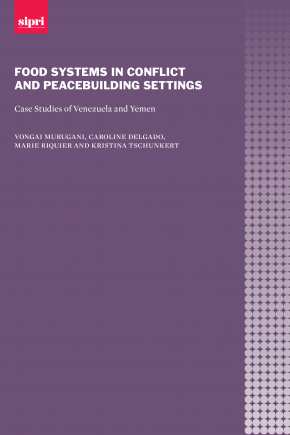Food Systems in Conflict and Peacebuilding Settings: Case Studies of Venezuela and Yemen

Violent conflict is one of the leading drivers of failing food systems and the resultant increase in world hunger is one of the most pressing issues of our time. As of September 2021, 161 million people were acutely food insecure, and many of these people live in conflict-affected communities. While the two-way relationship between violent conflict and food security has been recognized, the context-specific nature of these complex pathways and linkages is less well understood, and this has slowed initiatives to address the problem.
This paper is the second in a three-part series that aims to emphasize the urgency of addressing the relationship between conflict and food insecurity and to point out existing opportunities to do so. The report sets out the pathways and interconnections between food systems, hunger, violent conflict and peace in Venezuela and Yemen to elucidate possible ways out of the countries’ respective crises and to give a contextual understanding of the discussion in the first paper. This second paper contextualizes those pathways and interconnections, using Venezuela and Yemen as case studies. The paper ends with four recommendations intended to inform the development of better designed interventions which can limit the long-term consequences of conflict and food insecurity, and the potential for food security to foster peace can be developed.
1. Introduction
2. Venezuela
3. Yemen
4. Conclusions



